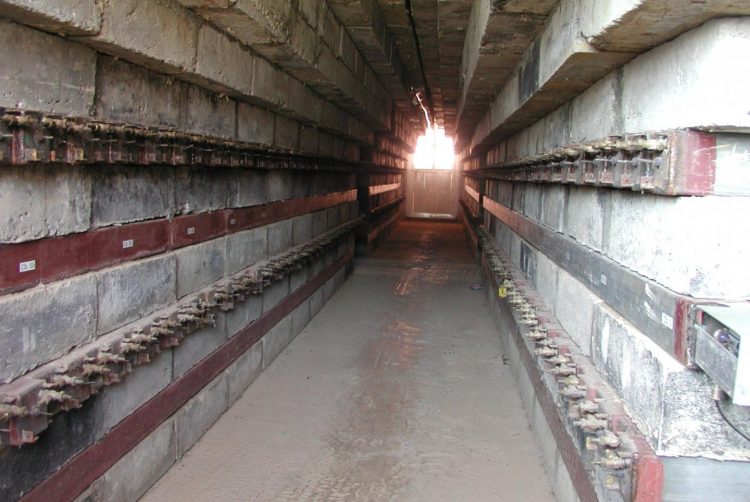GRAPES-3 indicates a crack in Earth's magnetic shield

The GRAPES-3 muon telescope, the largest and most sensitive cosmic ray monitor recorded a burst of galactic cosmic rays that indicated a crack in the Earth's magnetic shield Credit: TIFR
The burst occurred when a giant cloud of plasma ejected from the solar corona, and moving with a speed of about 2.5 million kilometers per hour struck our planet, causing a severe compression of Earth's magnetosphere from 11 to 4 times the radius of Earth.
It triggered a severe geomagnetic storm that generated aurora borealis, and radio signal blackouts in many high latitude countries.
Earth's magnetosphere extends over a radius of a million kilometers, which acts as the first line of defence, shielding us from the continuous flow of solar and galactic cosmic rays, thus protecting life on our planet from these high intensity energetic radiations. Numerical simulations performed by the GRAPES-3 collaboration on this event indicate that the Earth's magnetic shield temporarily cracked due to the occurrence of magnetic reconnection, allowing the lower energy galactic cosmic ray particles to enter our atmosphere.
Earth's magnetic field bent these particles about 180 degree, from the day-side to the night-side of the Earth where it was detected as a burst by the GRAPES-3 muon telescope around mid-night on 22 June 2015. The data was analyzed and interpreted through extensive simulation over several weeks by using the 1280-core computing farm that was built in-house by the GRAPES-3 team of physicists and engineers at the Cosmic Ray Laboratory in Ooty.
This work has recently been published in Physical Review Letters
Solar storms can cause major disruption to human civilization by crippling large electrical power grids, global positioning systems (GPS), satellite operations and communications.
The GRAPES-3 muon telescope, the largest and most sensitive cosmic ray monitor operating on Earth is playing a very significant role in the study of such events. This recent finding has generated widespread excitement in the international scientific community, as well as electronic and print media.
###
Links to articles
Research paper: P. K. Mohanty et al., Phys. Rev. Lett. 117, 171101 (2016),
APS Physics highlight: http://physics.
Media Contact
All latest news from the category: Physics and Astronomy
This area deals with the fundamental laws and building blocks of nature and how they interact, the properties and the behavior of matter, and research into space and time and their structures.
innovations-report provides in-depth reports and articles on subjects such as astrophysics, laser technologies, nuclear, quantum, particle and solid-state physics, nanotechnologies, planetary research and findings (Mars, Venus) and developments related to the Hubble Telescope.
Newest articles

High-energy-density aqueous battery based on halogen multi-electron transfer
Traditional non-aqueous lithium-ion batteries have a high energy density, but their safety is compromised due to the flammable organic electrolytes they utilize. Aqueous batteries use water as the solvent for…

First-ever combined heart pump and pig kidney transplant
…gives new hope to patient with terminal illness. Surgeons at NYU Langone Health performed the first-ever combined mechanical heart pump and gene-edited pig kidney transplant surgery in a 54-year-old woman…

Biophysics: Testing how well biomarkers work
LMU researchers have developed a method to determine how reliably target proteins can be labeled using super-resolution fluorescence microscopy. Modern microscopy techniques make it possible to examine the inner workings…





















